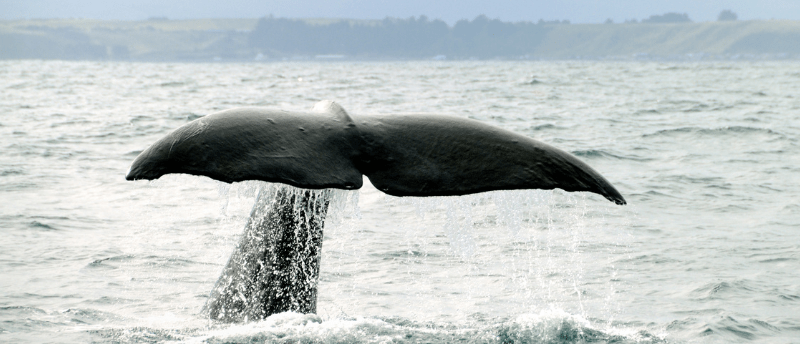Cultural codas: sperm whale dialects differ between clans

After decades of collaborative research, scientists have decoded Pacific Ocean sperm whale vocalizations, revealing how these whales maintain distinct group identities.
The Pacific Ocean is 64 million square miles; therefore, trying to gather whale acoustic signals from different whale clans across this ocean is no small task. That’s why an international research team, led by groups from the Max Planck Institute for Psycholinguistics (Nijmegen, the Netherlands) and Dalhousie University (Halifax, Canada), worked together to gather whale vocalization recordings from 23 locations across the Pacific Ocean in the hopes of identifying vocalizations representative of distinct clans [1].
Female sperm whales and their calves are known for traveling in groups, or pods, while male whales swim solo or between pods. These whales are also known for their clicking-like vocalizations, called codas. However, their Morse-code style communication is not uniform across pods. Researchers were curious about whether clans’ unique codas, or identity codas, were evidence of clan-specific group identities and if they parallel human group identity markers, such as clothing style or dialect.
“Whales from different clans never interact with each other, even when they share the same waters,” reported first author Taylor Hersh (Max Planck Institute for Psycholinguistics). “This suggests that the whales have some way of distinguishing ‘us’ vs. ‘them,’ and we wanted to know if they do so using identity codas.”
 Hippos can decipher their friend’s thunderous calls from a stranger’s
Hippos can decipher their friend’s thunderous calls from a stranger’s
Hippos can recognize voices of local hippos and call stranger danger to an unfamiliar vocal call, also known as wheeze honks.
A team of 27 international scientists combined their sperm whale coda recordings, resulting in a dataset of 23,000 codas. Of these codas, they determined which were identity (clan-specific) codas using a computational method that utilizes comparative mixture models developed by Hersh and fellow researchers [2].
They identified seven distinct clans of sperm whales via their unique dialects. When these clans ventured near each other, the differences in their dialects were exaggerated, a behavior also observed in humans, clearly indicating the presence of multiple clans with distinct identity codas. Understanding how sperm whale vocalizations are distinct between clans informs conservation efforts and provides insight into how non-human culture manifests itself: “Our results demonstrate how culture can structure animal populations. The conditions required for the evolution of symbolic markers of cultural identity exist among non-human animals as well,” commented Hersh.
Although previous research has documented how whale behavior differs across clans, the behavior of these seven sperm whale clans has not been explored. The team plans to conduct further research into the symbolic markers and identity codas that make these seven clans different as well as extend their research beyond the Pacific Ocean.